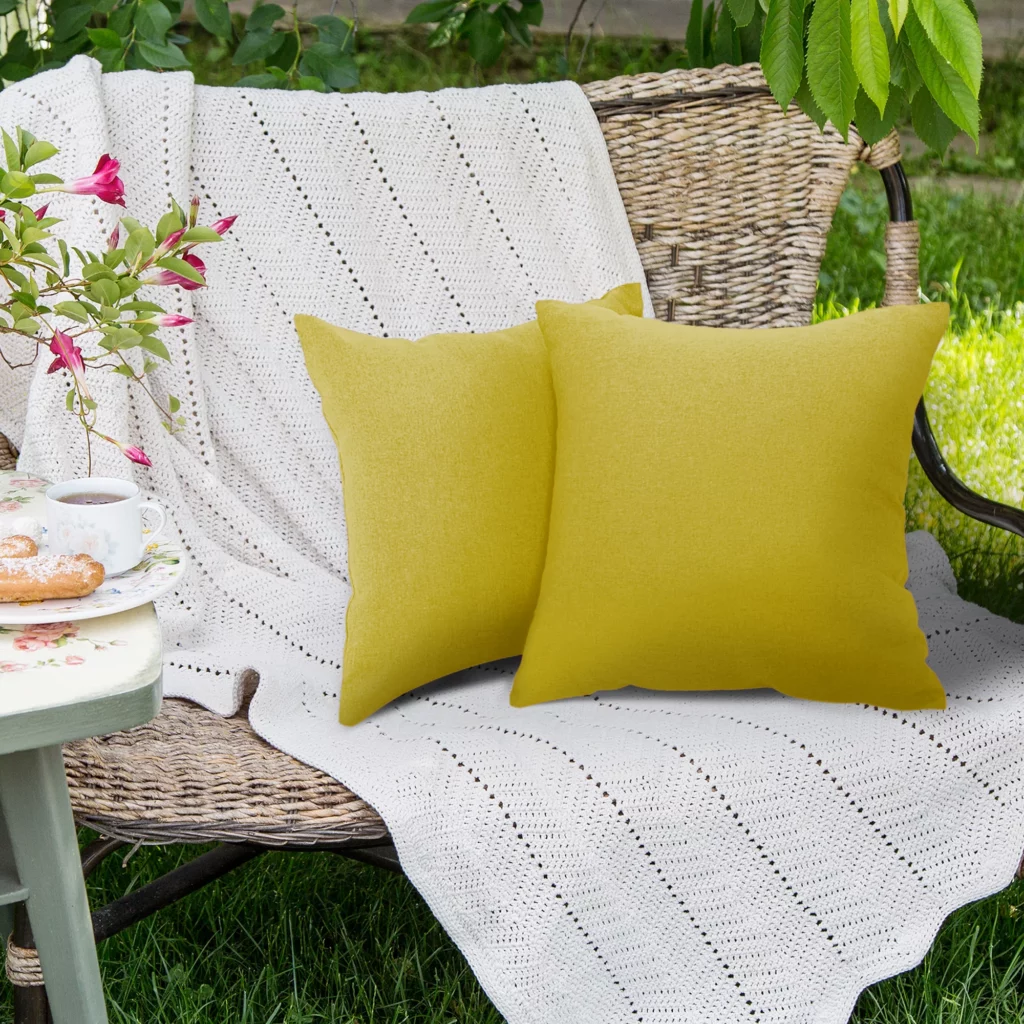Introduction: In a world where sustainability is becoming increasingly vital, every aspect of our lives can be an opportunity to make environmentally conscious choices. Even something as seemingly simple as choosing the right pillowcase material can have a positive impact on the planet. In this blog, we’ll explore the world of sustainable pillowcase materials, shedding light on options like organic cotton, bamboo, and more. Discover how these materials contribute to a greener bedroom environment while providing comfort that you’ll love.
1. Embracing Organic Cotton: A Sustainable Classic Organic cotton is a staple in the sustainable textile industry, and for good reason. Grown without the use of synthetic pesticides or fertilizers, organic cotton reduces the environmental footprint associated with conventional cotton production. Here’s why it’s a fantastic choice for your pillowcases:
- Reduced Chemical Usage: Organic cotton farming promotes soil health and prevents water pollution by avoiding harmful chemicals.
- Breathable Comfort: Organic cotton pillowcases are breathable, making them perfect for a comfortable night’s sleep.
- Hypoallergenic: These pillowcases are gentle on sensitive skin and can even alleviate allergy symptoms.
2. Bamboo Bliss: Luxurious and Sustainable Bamboo is another sustainable material that’s gaining popularity in the bedding industry. Bamboo pillowcases offer a host of benefits for both you and the environment:
- Rapid Growth: Bamboo is a fast-growing plant that requires minimal water and no pesticides to thrive, making it a renewable resource.
- Temperature Regulation: Bamboo pillowcases are naturally breathable and moisture-wicking, providing a cool and comfortable sleeping experience.
- Silky Softness: Bamboo fabric boasts a luxuriously smooth texture that rivals traditional silk.
3. Linen Love: Timeless and Earth-Friendly Linen pillowcases are a favorite for those seeking both sustainability and a touch of elegance. Linen offers various environmental advantages:
- Low Water Usage: Linen is made from flax, a crop that requires less water than many other natural fibers.
- Durability: Linen is known for its longevity, reducing the need for frequent replacements.
- Textured Charm: Linen’s natural texture adds character to your bedding, creating a laid-back yet refined look.
4. Recycled Fibers: Reducing Waste, Enhancing Comfort Recycled materials are gaining traction in the textile industry, offering a second life to discarded resources. Look for pillowcases made from recycled fibers, which can include everything from plastic bottles to reclaimed cotton:
- Resource Conservation: Using recycled materials diverts waste from landfills and reduces the demand for virgin resources.
- Soft and Sustainable: Recycled fiber pillowcases can be just as soft and comfortable as those made from new materials.
5. Ethical Manufacturing and Certifications: A Green Stamp of Approval When shopping for sustainable pillowcases, keep an eye out for certifications like GOTS (Global Organic Textile Standard) or OEKO-TEX Standard 100. These certifications ensure that the materials used meet specific environmental and ethical standards.
Conclusion: Rest Easy on Eco-Friendly Pillowcases By choosing sustainable pillowcase materials, you’re not only enhancing your sleep experience but also contributing to a healthier planet. Whether you opt for organic cotton, bamboo, linen, or recycled fibers, each choice supports eco-friendly practices and reduces the negative impact on the environment. As you transform your bedroom into a green haven, your conscious choices will inspire a greener, more sustainable future for everyone.
Introduction: In a world where sustainability is becoming increasingly vital, every aspect of our lives can be an opportunity to make environmentally conscious choices. Even something as seemingly simple as choosing the right pillowcase material can have a positive impact on the planet. In this blog, we’ll explore the world of sustainable pillowcase materials, shedding light on options like organic cotton, bamboo, and more. Discover how these materials contribute to a greener bedroom environment while providing comfort that you’ll love.
1. Embracing Organic Cotton: A Sustainable Classic Organic cotton is a staple in the sustainable textile industry, and for good reason. Grown without the use of synthetic pesticides or fertilizers, organic cotton reduces the environmental footprint associated with conventional cotton production. Here’s why it’s a fantastic choice for your pillowcases:
- Reduced Chemical Usage: Organic cotton farming promotes soil health and prevents water pollution by avoiding harmful chemicals.
- Breathable Comfort: Organic cotton pillowcases are breathable, making them perfect for a comfortable night’s sleep.
- Hypoallergenic: These pillowcases are gentle on sensitive skin and can even alleviate allergy symptoms.
2. Bamboo Bliss: Luxurious and Sustainable Bamboo is another sustainable material that’s gaining popularity in the bedding industry. Bamboo pillowcases offer a host of benefits for both you and the environment:
- Rapid Growth: Bamboo is a fast-growing plant that requires minimal water and no pesticides to thrive, making it a renewable resource.
- Temperature Regulation: Bamboo pillowcases are naturally breathable and moisture-wicking, providing a cool and comfortable sleeping experience.
- Silky Softness: Bamboo fabric boasts a luxuriously smooth texture that rivals traditional silk.
3. Linen Love: Timeless and Earth-Friendly Linen pillowcases are a favorite for those seeking both sustainability and a touch of elegance. Linen offers various environmental advantages:
- Low Water Usage: Linen is made from flax, a crop that requires less water than many other natural fibers.
- Durability: Linen is known for its longevity, reducing the need for frequent replacements.
- Textured Charm: Linen’s natural texture adds character to your bedding, creating a laid-back yet refined look.
4. Recycled Fibers: Reducing Waste, Enhancing Comfort Recycled materials are gaining traction in the textile industry, offering a second life to discarded resources. Look for pillowcases made from recycled fibers, which can include everything from plastic bottles to reclaimed cotton:
- Resource Conservation: Using recycled materials diverts waste from landfills and reduces the demand for virgin resources.
- Soft and Sustainable: Recycled fiber pillowcases can be just as soft and comfortable as those made from new materials.
5. Ethical Manufacturing and Certifications: A Green Stamp of Approval When shopping for sustainable pillowcases, keep an eye out for certifications like GOTS (Global Organic Textile Standard) or OEKO-TEX Standard 100. These certifications ensure that the materials used meet specific environmental and ethical standards.
Conclusion: Rest Easy on Eco-Friendly Pillowcases By choosing sustainable pillowcase materials, you’re not only enhancing your sleep experience but also contributing to a healthier planet. Whether you opt for organic cotton, bamboo, linen, or recycled fibers, each choice supports eco-friendly practices and reduces the negative impact on the environment. As you transform your bedroom into a green haven, your conscious choices will inspire a greener, more sustainable future for everyone.


